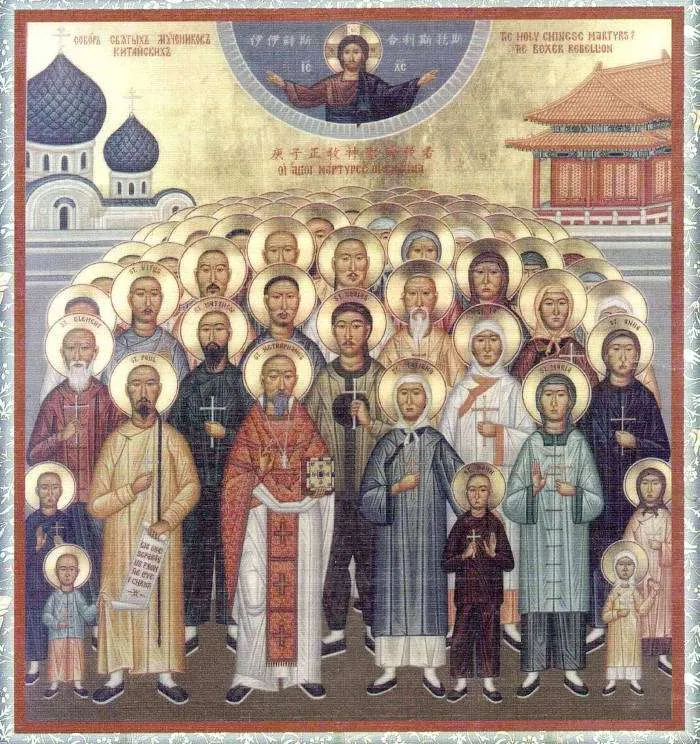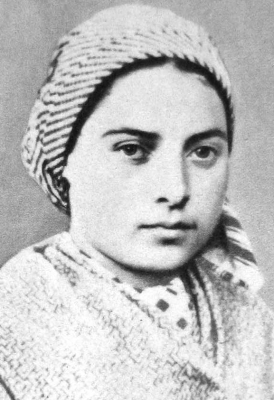1648–1930; Invoked for the people of China; Canonized by Pope John Paul II on October 1, 2000
The Syro-Persian Church of the East is believed to have first reached China around the year 630 when two monks arrived to engage in silk trade. Although they were Christians, they followed the Nestorian heresy, which denied the divinity of Christ. The Chinese emperor welcomed them and permitted them to share their faith. Over the next two centuries, some Christian churches were erected and converts were made. However, by the mid-ninth century, Christians were being persecuted. In the year 987, an Arab writer from Baghdad wrote of a conversation he had with a monk who had traveled to China. The monk explained, “Christianity is extinct in China; the native Christians have perished in one way or another; the church which they had has been destroyed and there is only one Christian left in the land.”
In the mid- to late-thirteenth century, Emperor Kublai Khan, the grandson of Genghis Khan, showed greater tolerance of Christianity, especially since his mother was a Nestorian Christian. Franciscan and Dominican friars were permitted to spread the faith, but their efforts yielded little. By the following century, with the rise of the Ming Dynasty, Christianity was once again all but driven out.
In 1552, Saint Francis Xavier began his missionary activity in India, Malaysia, and Japan. Though he never made it to China, his missions paved the way for the Italian Jesuit Matteo Ricci and his companions to help found the Chinese Jesuit Mission on mainland China in 1582. Their approach was to learn the language and culture and try to assimilate as much as possible, winning over hearts and minds with kindness and teaching the people math, science, astronomy, and mapmaking. Ricci and his companions won over some influential converts and managed to translate a catechism into the Chinese language. However, their efforts later drew criticism from the Church hierarchy for blending Confucian religious beliefs with the Catholic faith.
The 120 saints we honor today spilled their blood for the faith during the four centuries that followed. The first to be martyred was Father Francisco Fernández de Capillas, a Spanish Dominican priest. Father de Capillas spent his first two decades as a priest working in the Philippines as a missionary. In 1642, Father de Capillas arrived for his final mission in mainland China. He and his companions worked fervently for the next several years, winning over many converts and even establishing a lay order of Dominicans. In 1644, the less-tolerant Qing Dynasty replaced the Ming Dynasty, immediately threatening the missions. In 1647, Father de Capillas was captured, imprisoned, and tortured. While in prison, he wrote a letter in which he said, “I am here with other prisoners and we have developed a fellowship. They ask me about the Gospel of the Lord. I am not concerned about getting out of here because here I know I am doing the will of God. They do not let me stay up at night to pray, so I pray in bed before dawn. I live here in great joy without any worry, knowing that I am here because of Jesus Christ. The pearls I have found here these days are not always easy to find.” Two months later, he was sentenced to death and immediately decapitated on the charge of teaching false doctrine and opposing the new emperor. He died while praying the sorrowful mysteries of the rosary.
From the martyrdom of Father de Capillas until 1930, 119 other Catholic saints would follow in his footsteps as martyrs in China. Eighty-seven were native Chinese Christians who were lay catechists, merchants, cooks, farmers, and even a young boy. Thirty-three were foreign missionaries from various religious orders, working to spread the Gospel at the risk of their lives.
The next several decades after Father de Capillas’ death were relatively peaceful, as successive emperors tolerated Christians. That all changed, however, when in 1707 the Pope issued a decree forbidding the co-mingling of Confucian religious practices with the Catholic faith, such as ancestor worship. This infuriated the emperor, and over the next fifteen years, most of the Catholic missions were suppressed. In 1724, the new emperor officially banned Christianity and expelled all Catholic priests. Churches were confiscated and turned into public buildings. By the end of the eighteenth century, there remained just a little over 100,000 Catholics in China who practiced their faith in secret.
In 1747–1748, five more Spanish Dominicans were martyred. In 1814, persecutions picked up again as a result of new imperial decrees forbidding the practice of the Christian faith. This time, the persecutions were directed towards native-born Chinese Christians. Among them was Father Augustine Zhao Rong, a priest of the Diocese of Chengdu, China.
Father Augustine, whose name is attached to today’s memorial, was the first native-born Chinese priest and the first Chinese priest to be martyred. He was originally a soldier entrusted with the task of transporting to Beijing French Bishop John Gabriel Taurin Dufresse who had been arrested and would also be martyred. During the long journey, the bishop greatly impressed Zhao Rong with his kindness and peaceful demeanor in the face of persecution. Zhao Rong requested and received baptism after learning about the Catholic faith. Taking the name Augustine, he was later ordained a priest. After his arrest, he was offered the opportunity to renounce the Catholic faith but refused. After horrific tortures, Father Augustine died of his injuries in prison.
Between 1814 and 1862, twenty-six Christians were martyred in China. In the summer of 1900, a fierce persecution of foreigners and Christians broke out. The Boxer Rebellion claimed the lives of eighty-six martyrs, including many religious sisters, priests, catechists, and other laity. In addition to the eighty-six canonized martyrs, thousands of other Christians died. The final two martyrs honored today, an Italian priest and bishop, died in 1930.
As the Church Father Tertullian famously said, “The blood of martyrs is the seed of the Church.” Such is the case in China. The proclamation of the Gospel in this populous land continues today, and much resistance continues. As we honor these Chinese martyrs, pray for the Chinese people, begging God to continue to send holy men and women to that land to share the saving message of Jesus Christ.
Source: https://mycatholic.life/saints/saints-of-the-liturgical-year/july-9—saint-augustine-zhao-rong-and-companions-martyrs/








